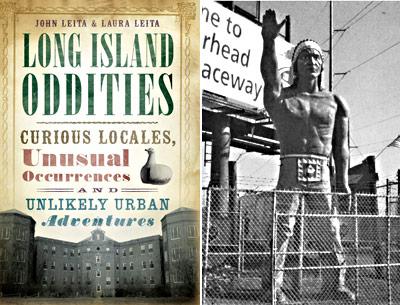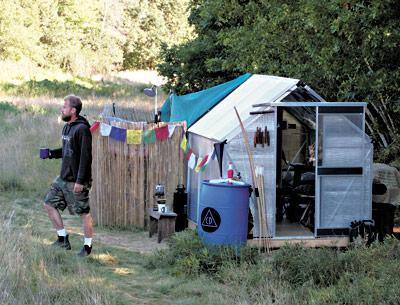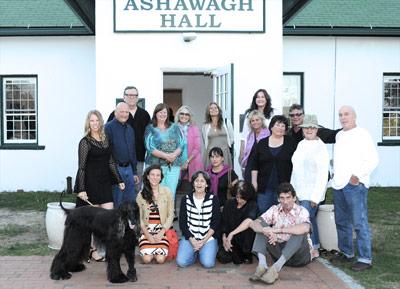The Creepy and the Loony
The Creepy and the Loony

“Long Island Oddities”
John Leita and Laura Leita
History Press, $17.99
John Leita and Laura Leita have compiled a collection of accounts, enriched by contributions to their Internet blog over the last 10 years, that share some of Long Island’s oddities. Their book, titled, appropriately enough, “Long Island Oddities: Curious Locales, Unusual Occurrences, and Unlikely Urban Adventures,” comprises six chapters: “Roadside Oddities,” “Oddly Abandoned,” “Ghosts Among Us,” “Close Encounters of the Odd Kind,” “Phantastic Legends,” and “A Grave Difference.”
Their goal is to share the extraordinary stories of some of the ordinary things we all pass on the road every day, and the result is a curious mix of tour guide information accompanied by local ghost lore and legend.
In their separate introductions to the book, both authors make reference to paranormal experiences as young children, experiences that fostered in each a lifelong interest in exploring the unknown — roadside attractions, abandoned buildings, cemeteries, accounts of U.F.O. conspiracies and abductions, and places haunted by spirits.
Of course, many people today consider alleged paranormal activities, including tales of ghostly activity, to be “more of gravy than of grave,” as Dickens’s character Scrooge exclaimed to the ghost of Marley in the 1843 novella “A Christmas Carol.” In his 1904 preface to “Lady Gregory’s Complete Irish Mythology,” W.B. Yeats wrote, “As life becomes more orderly, the supernatural sinks farther away.” But for some people and for some cultures, ghosts and ghostly creatures, as well as other paranormal events, are taken for granted as real, and are part of a sense of reality defined by and sustained by cultural filters.
Throughout recorded history, humans have been fascinated with or frightened by death, the afterlife, and the things that make our flesh crawl and the hairs on the backs of our necks rise. As the traditional Scottish prayer exclaims, “From ghoulies and ghosties, and long-leggedy beasties, and things that go bump in the night, Good Lord, deliver us!”
Paranormal activities have become a big business in American popular culture. On television and in the movies appear ghosts, vampires, and other monsters such as Bigfoot, Mothman, and the chupacabra, the goat-blood-sucking creature reportedly the size of a small bear, with a row of spines reaching from the neck to the base of the tail. Urban legends are still told about the murderous villain the Hook, as well as assorted ax murderers, vanishing hitchhikers, and the Old Hag who visits sleeping victims, crawling onto their chests while paralyzing them and making it difficult to breathe.
The ancient Celtic ceremony Samhain (pronounced Sah-ween) acknowledged the thinning of the veil between the living and dead, when all manner of beings were abroad — ghosts, fairies, and demons — and has survived as our modern-day Halloween.
Conspiracy theories, too, abound in our popular culture and often become a part of urban lore and legend. The assassination of John F. Kennedy, the rumors of secret government sites associated with alleged alien spacecraft crashes and landings, and reports of physical abductions of individuals by alien beings are all part of our modern preoccupation with the strange and bizarre.
The authors of “Long Island Oddities” present these popular and folk culture themes in three chapters of their book. But the authors’ first two chapters avoid any mention of the paranormal and instead offer an overview of local roadside structures and artwork, followed by an introduction to abandoned buildings around Long Island.
Chapter 1 consists of quite cursory descriptions of 15 roadside attractions, including the Big Duck in Flanders, the “Stargazer” sculpture in a farm field just north of Exit 62 of the Sunrise Highway, the two dueling cavalier statues at the Casa Basso restaurant in Westhampton, and my favorite, the Witch’s Hat in Aquebogue (which I remember as having once housed the office of a local veterinarian, Doc Brown).
The second chapter consists of more descriptive accounts of 11 “abandoned buildings,” among them local sites such as the Bulova watchcase factory in Sag Harbor and the Cedar Point Lighthouse in Northwest Harbor. Black-and-white photos accompany each description in both sections.
It is not until Chapter 3 that we are introduced to what the authors suggest are “creepy and possibly haunted” buildings, 17 of them in fact, where we might find “Ghosts Among Us.” The chapter relates several narratives dealing with ghosts, spirits, mysteriously moving furniture, and unexplained noises emitting from nearby spaces. Some accounts are of the authors’ own adventures, and some have been told to them by others, all occurring within Long Island buildings such as the Montauk Manor and Murf’s Backstreet Tavern in Sag Harbor.
Chapter 4, “Close Encounters of the Odd Kind,” centers around a supposed U.F.O. crash at Southaven near Brookhaven National Lab, and around secret government experiments at Camp Hero in Montauk with the assistance of reptilian aliens. It also delves into abductions and conspiracies alleged by several individuals.
Next, the reader is led around five of Long Island’s haunted landscapes that are connected to local legends relating tales of death, betrayal, murder, and messages from beyond the grave in the form of graffiti. Chapter 6 returns to the tour guide format, visiting six cemeteries, including the Bide-a-Wee Pet Cemetery Memorial Park in Wantagh, where we find the grave of Checkers, former President Richard Nixon’s dog.
All in all, the book is an interesting examination of often overlooked local history and lore. Through the use of historical records, photographs, and their own and others’ personal experiences, the authors share their fascination with Long Island oddities.
John Eilertsen is the executive director of the Bridgehampton Museum. He lives in Southampton.


